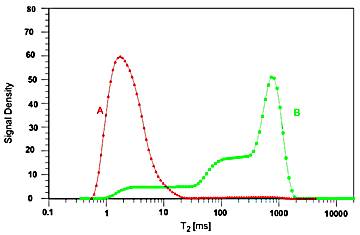|
Abstract
Nuclear Magnetic Resonance Relaxometry is a universally accepted technique for the determination of structural and transport properties of porous media in a non-destructive and non-invasive way. In particular, it allows one to determine [1] porosity, permeability and irreducible saturation. The increasing use of this methodology requires new types of equipment making it possible to investigate samples with particular characteristics, such as large, full-size cores.

In order to perform relaxation measurements on full size cores, an apparatus has been designed and built. It is composed of a versatile SpinMaster console, a permanent magnet with large bore and good field homogeneity over the whole sample volume, and several RF coils combining large volume with short dead time with high B1 field homogeneity. The apparatus is compatible with the cores of up to 12 cm in diameter.
To further improve the performance of the apparatus, we have implemented special measurement pulse sequences, such as Logarithmically distributed Aperiodic Pulse Saturation Recovery (LAPSR), Inversion Recovery with Composite Inversion Pulse (IR-CP) and CPMG with Composite Inversion Pulses (CPMG-CP).
In order to evaluate the system performance, we have performed measurements using phantoms with known NMR parameters, as well as non-consolidated cores (10 cm in diameter and 15 cm high).
The Figure shows two T2 relaxation time distributions, obtained evaluating raw data by UPEN [2], for two different samples: sample A is a fine sand, while sample B is a gravel. As expected, sample A is characterized by a single peak at very short times, whereas sample B shows a wide distribution covering three decades.
References:
- Borgia G.C., Bortolotti V., Brancolini A., Brown R.J.S., Fantazzini P., Developments in core analysis by NMR measurements, Magn.Reson.Imaging 14, 751-760 (1996).
- Borgia G.C., Brown R.J.S., Fantazzini P., Uniform-Penalty inversion of multiexponential decay data II: data spacing, T2 data, systematic data errors, and diagnostics, J.Magn.Reson. 147, 273-285 (2000); ibidem 132, 65-77 (1998).
|